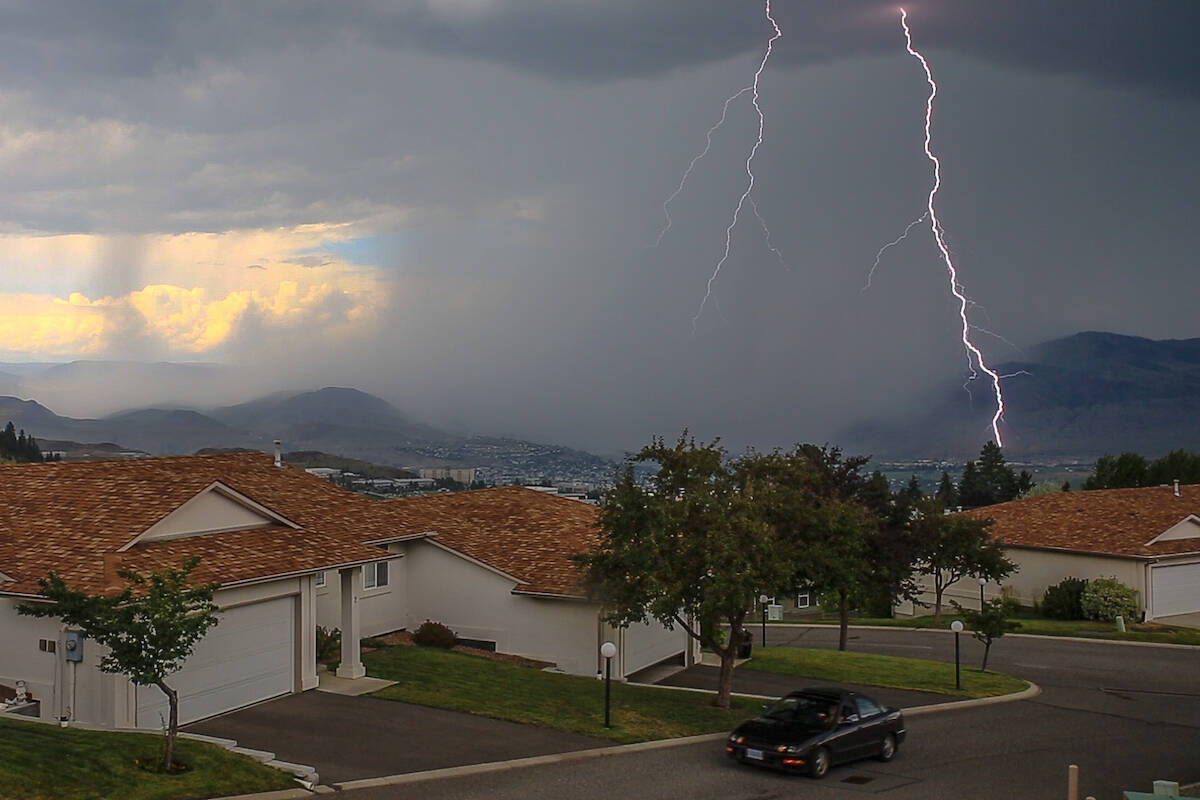Thunderstorms and lightning on Wednesday morning sparking “multiple new wildfires” in B.C.’s Coastal Fire Centre region, and concerns about more to come.
The province’s Wildfire Service reported lightning strikes as part of a series of storms which arrived in Canada after making their way northwest from Washington.
Two of the storms made contact on Vancouver Island’s central coast: one around Tofino, another near Kildonan. According to province’s interactive fire map, 10 small fires have been sparked in the Island’s western central area. Fireworks and campfires are on a list of activities currently prohibited in the region.
By Thursday, the coastal region is expected to be in the clear as most of the storms should move eastward.
But scattered thunderstorms are expected to develop across much of the southern part of the province over the next two days. Areas expected to be affected include the Fraser Valley, South Thompson and Okanagan regions.
The Coastal Fire Centre was aware and prepared for this potential lightning event, and we are anticipating more fires to be reported over the coming days. For the latest info on current wildfire activity, visit https://t.co/WaILD7UIMG or download the #BCWildfire mobile app.
— BC Wildfire Service (@BCGovFireInfo) August 10, 2022
British Columbians in parts of the province without any rain should still be on the lookout for dry lightning. During dry-lightning thunderstorms, the rainwater evaporates before reaching the ground while lightning strikes nearby.
Lightning can be tracked using the federal government’s Lightning Danger Map which shows potential lightning strikes in 10-minute intervals. Users of the map should note that it operates on Coordinated Universal Time (UTC) which is seven hours ahead of Pacific Time.
In addition to the rainfall, parts of southern B.C. are also facing heat and air quality warnings.
This combination of heat, dry conditions and lightning strikes creates an increased risk of wildfires. However, because there is still some rain, it may take longer to detect fires. This confluence of factors warrants extra vigilance.
Last year, lightning was the leading cause of wildfires.
“If you do see smoke, it could be a holdover ignition and we’d appreciate your quick reporting of those fires,” said Neal McLoughlin, the superintendent of predictive services at B.C. Wildfire Services.
RELATED: B.C. man has helped battle many wildfires – but nothing like the Keremeos Creek fire

